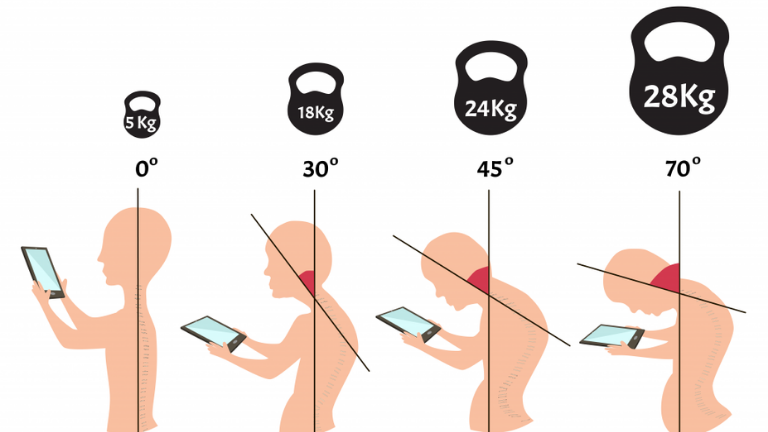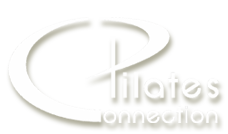
The Heavy Burden of Your Head – Avoiding Tech Neck
Did you know your head weighs about 5 kilograms? It’s the weight your neck is designed to support when your posture is aligned correctly. However, the moment you tilt your head forward—even slightly—this weight increases dramatically. This is known as “text neck” or “tech neck,” a growing concern in today’s device-driven world.
How Head Position Impacts the Spine
The weight of your head increases exponentially with the angle of inclination. When you’re looking straight ahead, your neck supports approximately 5 kg. But as you tilt forward:
- At 15 degrees, the effective weight of your head is about 12 kg.
- At 30 degrees, this increases to 18 kg.
- At 45 degrees, it’s a staggering 24 kg.
- At 70 degrees, your neck and spine bear an incredible 28 kg.
This weight doesn’t just affect your neck—it reverberates throughout your spine, placing strain on your lower cervical vertebrae, upper back, and even the chest.
The Impact on Soft Tissues and Long-Term Health
Your spine isn’t working alone in supporting your head. A network of soft tissues—muscles, fascia, ligaments, and tendons—provides additional support. When your head is tilted forward, these tissues are stretched and tensed for prolonged periods, leading to:
- Muscle fatigue
- Ligament strain
- Joint stiffness
- Increased pressure on intervertebral discs
Over time, this can result in chronic pain, reduced mobility, and the development of compensatory issues in other parts of your body, such as the shoulders, upper back, and even the lower spine.
The Role of Devices and Posture Awareness
Our constant use of smartphones, tablets, and laptops exacerbates this problem. Studies show the average person spends several hours daily looking down at their devices. This “tech neck” phenomenon is not just a temporary inconvenience; it’s a potential precursor to long-term musculoskeletal issues.
A 2014 study published in Surgical Technology International found that forward head posture can lead to significant stress on the cervical spine, contributing to degenerative changes over time.
How Pilates Can Help
Pilates is a powerful tool for addressing posture-related issues and maintaining spinal health. By focusing on core strength, flexibility, and alignment, Pilates can:
- Improve Awareness: Pilates trains you to recognise poor posture and correct it in real time.
- Strengthen Support Muscles: Targeted exercises strengthen the deep stabilising muscles that support your neck and spine.
- Enhance Flexibility: Stretching routines release tension in overworked muscles and promote a full range of motion.
- Rebalance the Body: Pilates ensures your entire body works in harmony, reducing compensatory strain on other areas.
Practical Tips for Everyday Life
- Device Positioning: Hold devices at eye level to minimise forward head tilt.
- Frequent Breaks: Take breaks every 20–30 minutes to stretch and realign your posture.
- Engage in Pilates: Incorporate regular Pilates sessions into your routine to build a resilient, well-supported spine.
Your head may seem like a small part of your body, but its impact on your overall health is enormous. By becoming mindful of your posture and incorporating practices like Pilates, you can prevent the strain caused by tech neck and support long-term spinal health.
Take the first step toward a healthier posture—your neck, spine, and entire body will thank you!
Related Article & Suggested Exercises: https://pilates-connection.com.au/body-in-focus-tech-neck/

Sorry, the comment form is closed at this time.